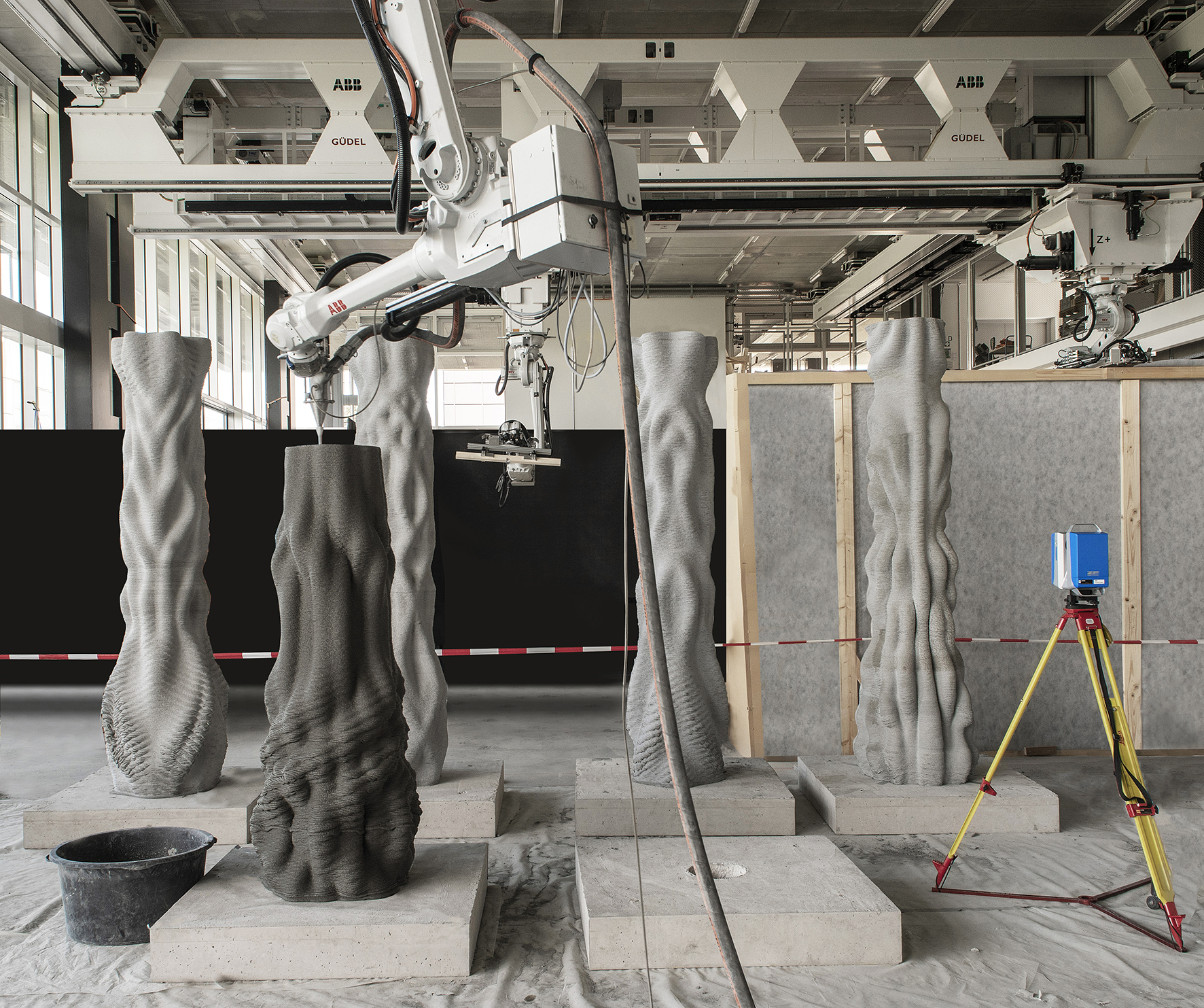20.01.2020
Concrete Choreography heads to the WEF
Students of the Master of Advanced Studies in Digital Fabrication (MAS DFAB) from ETH Zurich investigated how emerging digital technologies could be used to create a contemporary take on the column typology - a key feature of architecture for thousands of years.
This novel concrete printing process was developed through interdisciplinary collaborations between Digital Building Technologies and Physical Chemistry of Building Materials, both research groups of ETH Zurich that are supported by the National Center of Competence in Research in Digital Fabrication.
In addition to supporting the weight of a structure, traditionally columns have been decorated to increase a building's aesthetic appeal. In fact, columns have been so integral to the human environment that they are often used in non-structural ways, as monuments or purely decorative features.
Furthermore, those columns have been made from concrete, which is the most widely used substance on earth, after water. By some estimates, concrete is responsible for as much as eight per cent of the world's CO2 and consumes a 10th of the world's industrial water, which renders it an environmental challenge. We are reliant on concrete and that will not change in the near future, but any technology that enables us to use less concrete is hugely beneficial.
Therefore, the MAS DFAB students were keen to explore the possibilities that could be unlocked by new design paradigms and fabrication methods in the realm of concrete. The result was Concrete Choreography, an installation first seen at Riom, Switzerland, for the Origen Festival of Culture in the summer of 2019. The installation consists of nine columns, each 2.7 metres high, produced during a 10-week project. Transported by truck to the site in the Swiss alps, the pillars formed a stage and an interactive environment, in which dancers would perform.
Further research into design, material and reinforcement allowed the printing process to be-come more robust. In December 2019, a new version of the installation, including more slender posttensioned columns, was constructed for the World Economic Forum in Davos.
The pillars were fabricated by a fully-automated, robot 3D printer that built them up, layer-by-layer, at a rate of 180 millimetres per second. Now, one three-metre tall column takes less than two hours to print, using a special fast-setting concrete mix.
The aesthetic potential of this new approach is demonstrated in the designs: each of the columns has its own fluid shape and surface texture. They were created using computational design, a process in which computers generate possible geometries based on parameters set by human designers. This allows complex designs to be developed and tested far more quickly than otherwise because computers handle much of the complexity and form variation.
However, printing the final designs, including surface ornamentation, was no simple matter. In fact, it was achievable only because the concrete 3D printer can print in 'high resolution' where each layer is just five millimetres thick and 25 millimetres wide.
Adding to its aesthetic possibilities, this new process could introduce a more ecological way of building with concrete. The layering process means that the pillars can be hollow, so they use less material than traditional methods of construction. They also don't require any 'formwork' during the construction process.
Formwork is the mould, usually made from wood or steel, into which concrete is poured and held in shape while it sets. Usually it is temporary, though sometimes the formwork becomes part of the completed structure. Eliminating the formwork also means using fewer materials, which adds to the durability of this method.
Through the archetypical shape of the column, Concrete Choreography explores the formal language of concrete 3D printed architectural components. The combination of an age-old material with a cutting-edge fabrication processes challenges us to rethinking design for more sustainable concrete constructions.
At World Economic Forum 2020
• Project Team:
Ana Anton, Eleni Skevaki, Yoana Taseva, Prof. Benjamin Dillenburger (Digital Building Technologies, ETH Zurich)
Lex Reiter, Prof. Robert J. Flatt (Physical Chemistry of Building Materials, ETH Zur-ich)
• Technical Support: Michael Lyrenmann, Philippe Fleischmann, Andreas Reusser, Heinz Richner
• Funding
This research was supported by the NCCR Digital Fabrication, funded by the Swiss National Science Foundation (NCCR Digital Fabrication Agreement #51NF40-141853), the Partnership Council for Sustainable Construction / Digital Fabrication, and by Siemens, Geberit and the ETH Zürich Foundation.
Read more about ETH Zurich at the WEF 2020.
Photo: Axel Crettenand, Digital Building Technologies ETH Zurich



